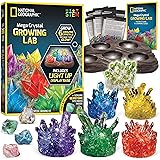Mastering Advanced DIY Electronics Projects: Unveiling Innovative Gadgets
The realm of DIY electronics projects offers an unparalleled opportunity for innovation, allowing enthusiasts to transform abstract concepts into tangible, functional devices. However, navigating the complexities of advanced circuit design and component integration can present significant hurdles. Sourcing reliable schematics and understanding the underlying engineering principles often proves challenging, potentially hindering the successful completion of sophisticated homemade gadgets.
This article aims to demystify several advanced DIY electronics constructs, complementing the intriguing visual demonstrations provided in the accompanying video. Detailed technical insights are offered, expanding upon the practical applications and foundational theories for each project. Through this comprehensive guide, makers are empowered to tackle intricate builds, enhancing their technical acumen and fostering a deeper understanding of practical electronics.
1. Constructing a Homemade HHO Generator and HHO Gun
The creation of a homemade HHO (Hydroxy) generator involves the principle of electrolysis, where water is split into its constituent hydrogen and oxygen gases. This process is typically initiated by applying an electrical current through electrodes submerged in an electrolyte solution. The video demonstrates voltage readings around 10.5V to 10.7V and current draws of approximately 1.44A to 1.46A, which are critical parameters influencing gas production rates.
For optimal performance and safety, careful selection of electrode materials, such as stainless steel plates, is paramount to resist corrosion and ensure efficient electrolysis. The electrolyte, often a caustic solution like potassium hydroxide (KOH), facilitates conductivity but necessitates stringent safety protocols due to its corrosive nature. Gas collection and handling require a sealed, yet pressure-relief-equipped, system to prevent hazardous gas accumulation. The subsequent transformation into an “HHO gun” involves directing this volatile gas mixture for ignition, a procedure demanding extreme caution due to the highly explosive nature of HHO gas. Proper flashback arrestors and controlled ignition mechanisms are indispensable for preventing uncontrolled detonations.
2. Encapsulating Circuits: The Skeleton Electric Circuit in Epoxy Resin
Encapsulation of electronic circuits within epoxy resin serves multiple purposes, ranging from aesthetic enhancement to robust environmental protection. As depicted in the video, a circuit can be meticulously arranged and then submerged in a two-part epoxy mixture. This process renders the custom electronics impervious to moisture, dust, and physical impact, significantly extending its operational lifespan in adverse conditions.
The selection of an appropriate epoxy resin is crucial; options vary in viscosity, cure time, and optical clarity. For circuits generating heat, resins with superior thermal conductivity may be specified to facilitate heat dissipation. The pouring and curing processes require meticulous attention to detail to preclude air bubbles and ensure a uniformly hardened, optically clear finish. Degassing the resin mixture in a vacuum chamber before pouring is often performed to eliminate trapped air, resulting in a flawless encapsulation. This technique finds utility in creating durable, visually striking components for unique installations or educational displays.
3. Building an Amazing LED VU Meter Homemade
An LED VU meter homemade project is an excellent demonstration of audio signal processing translated into a visual display. The video highlights the use of the KA2281 integrated circuit, a specialized IC designed for driving LED bar graph displays in response to analog input signals. This chip simplifies the complex task of converting varying audio voltage levels into proportional LED illumination.
The circuit typically involves feeding an audio signal into the KA2281, which then internally processes this input to control a series of LEDs. Resistors are precisely placed to define the sensitivity and threshold levels for each LED segment. Capacitors are incorporated for signal filtering and stabilization. Calibration is achieved through input gain adjustments, allowing the meter to accurately reflect the dynamic range of the audio source. This particular custom electronics build is not only functional for monitoring audio levels but also adds an engaging visual element to any sound system, showcasing the responsive nature of electronic design.
4. Understanding Wireless Energy Transmission
The concept of wireless energy transmission, demonstrated by lighting an LED coil without physical contact, relies primarily on inductive coupling, or more advanced resonant inductive coupling. As illustrated, a simple transmitter circuit is comprised of an NPN transistor, a 1kohm resistor, and solid copper wire configured into coils. This fundamental arrangement creates an oscillating magnetic field.
When a receiver coil, tuned to resonate at a similar frequency, is brought within this oscillating field, an electromotive force (EMF) is induced, causing current to flow and power the connected load, such as an LED. The efficiency and range of such a system are determined by factors including coil geometry, frequency, and the coupling coefficient between the coils. Enhancements like Litz wire for reduced skin effect and ferrite cores for flux concentration can significantly improve performance. While this demonstration focuses on low-power applications like LEDs, the principles are scalable, finding applications in charging portable devices or powering industrial sensors.
5. Crafting an Adjustable Voltage Regulator with Amper-Volt-Meter
An adjustable voltage regulator is an indispensable tool for any electronics lab or workshop, providing a stable and variable power source. The video details the construction of such a device utilizing the ubiquitous LM317 voltage regulator IC. This versatile component can provide a regulated output voltage ranging from 1.25V to 37V, contingent upon the input voltage and external component values.
The LM317’s output voltage is precisely controlled by an external resistive divider network, typically adjusted via an analog potentiometer, as mentioned in the video. Input voltage connectors route power through a main switch to the LM317 circuit. The integration of a small LED digital voltmeter module, which can be acquired for approximately $1, provides real-time voltage readouts. Furthermore, an analog ammeter (or “Voometer” as termed in the transcript) is incorporated to monitor the current draw of connected devices. This combined functionality offers comprehensive control and monitoring capabilities, making this a highly practical and essential piece of homemade electronics test equipment.
6. Designing a Touchless Hand Sanitizer Dispenser
The development of a touchless hand sanitizer dispenser, especially “without Arduino,” exemplifies practical automation through discrete component design. Such a system typically employs an infrared (IR) proximity sensor to detect the presence of a hand. Upon detection, a signal is sent to a control circuit, which then activates a small pump mechanism to dispense sanitizer.
Eliminating a microcontroller like Arduino implies the use of simpler integrated circuits, transistors, and logic gates to manage the sensor input and pump activation. This often results in a more cost-effective and simpler build for dedicated functions. Power efficiency is a key design consideration, particularly if the unit is battery-operated, necessitating low-power sensor and pump components. The mechanical assembly involves precise alignment of the sensor, pump, and nozzle within an enclosure, ensuring reliable and hygienic operation. This DIY electronics project directly addresses modern hygiene demands through accessible technology.







